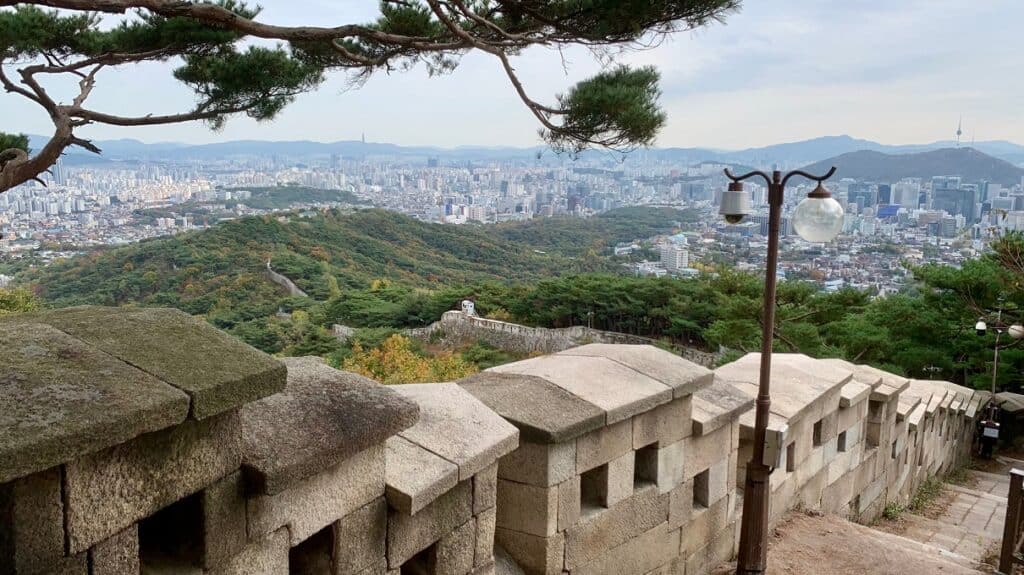The ancient city wall around Seoul is one of the greatest things about the capital of the Republic of Korea for older budget slow travelers like us. The trails are so easy with a few steep inclines that offer stunning views of the modern mega city and surrounding countryside – especially in autumn.


On the few parts where the wall is long gone from Japanese colonial days and modern South Korean development, the trail through the city is mostly marked by sign posts and tiles on sidewalks. And on the parts that remain, most of the wall has been fortified along the well-kept trails so that walkers and hikers can enjoy them.


Ancient city wall around Seoul for older budget slow travelers
Adventurous, fit travelers can walk around the old city perimeter in one day. It’s 18.6 kilometers long. Or the circumference can be enjoyed in parts. There are four sections, as indicated by the map below.

Today’s city limits go far beyond the ancient fortress wall, called Hanyangdoseong. Inside the old boundary, a few key gates stand against the modern skyline.


The wall was built in 1396 in the Joseon Dynasty to protect the city. There is a free museum at the bottom on the Naksan portion of the trail. I highly recommend this museum to get a sense of the importance of this structure to Korean history. And it explains how the wall was constructed and reconstructed over the years using thousands of workers.
Today, you can see the oldest parts of the wall in certain sections – bottom stones from older periods are still intact. And along the trail, you can still see carvings left by work teams that toiled over its construction.

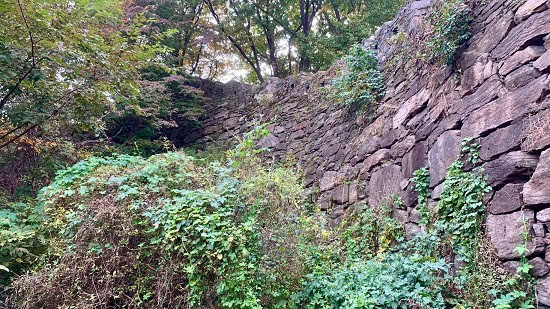
Many sections of the ancient trail are lit at night, which adds some romance to the experience. We stayed just outside the old fortress wall on the east side of the Naksan portion, pictured below.


It’s worth mentioning that the northern part of the ancient fortress wall is surrounded by active military grounds with warning signs not to enter. In fact, in a couple of spots, photos are not allowed, and signs warn hikers to stay on the main trail or face penalties.
It is along the northern part of the trail that the infamous “January 21 incident” in 1968 happened. That’s when North Korean soldiers crossed into South Korea for an assassination attempt. That part of the trail was closed for decades and only opened to the public in the last several years.
Related:
I do have two slight criticisms about the ancient city wall trail. First, a few sections were under construction during our visit, and the signage in English is not always clear on where to pick up the official trail.
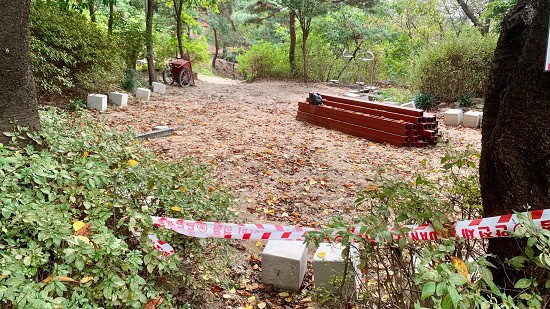

Second, parts of the trail weave between inside the old city limits, and outside the fortress wall – and here again, signage is not clear. That map above clearly shows the sections where you need to cross between ‘inside’ and ‘outside’ if you look closely.
However, that’s nothing to seriously complain about on a well kept trail with breathtaking views.


Even though Seoul is a mega city with more than 10 million people, it’s only the 38th largest city in the world. Still, city life can be wearing and that’s why the ancient city wall is so inviting to budget slow travelers like us, and locals alike. The trails get busy on weekends, so if your stay is longer, like our month-long visit, you can break up the trail over several days and even revisit them.
There are also many trails near Seoul on the outskirts of today’s city boundaries for serious hikers. Bukhansan National Park is one option. The Seoul Trail is another. I met a local man who hiked the Seoul Trail during his breaks from his city life. It’s a whopping 156 miles!
Wherever you wander in Seoul, or around its limits, a pat on the back to you for getting there on your travels.
Life is Now.
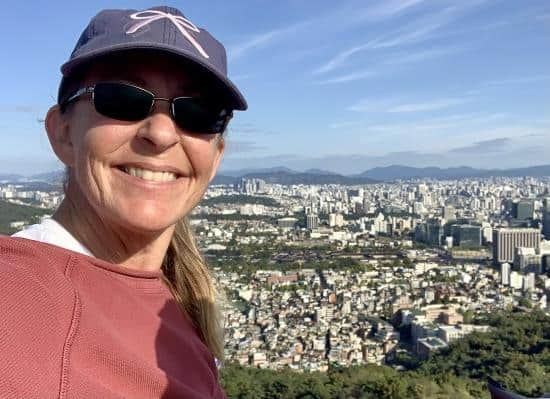



Thanks for reading, “Ancient city wall around Seoul for older budget slow travelers.”
More posts about South Korea:

What it cost to live in Seoul 1 month as budget slow travelers
Theo
What it’s like for a traveler near the Korean border in these crazy times
Ellen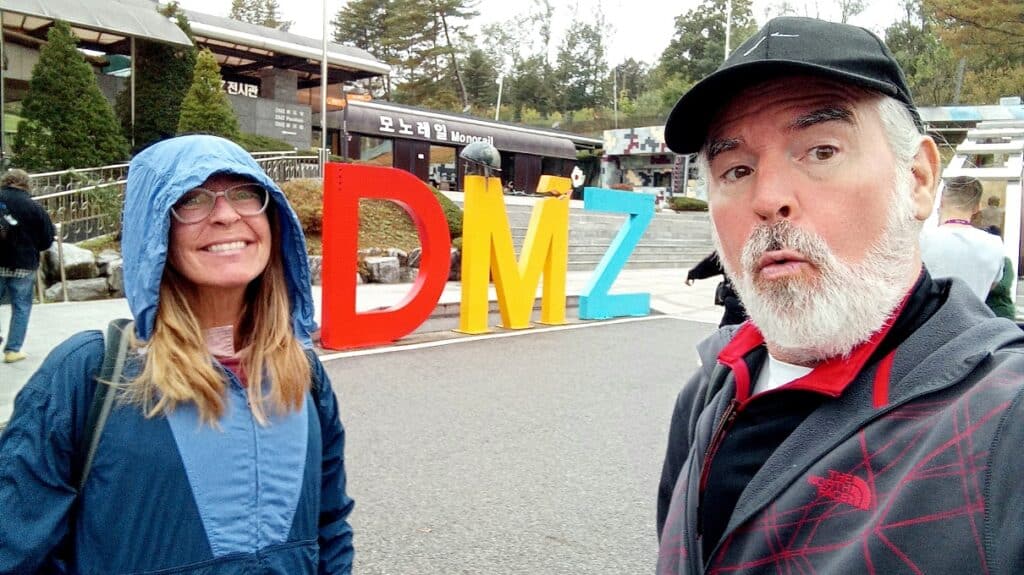
Korean DMZ: What it’s like and how to save money getting there
Theo
Gyeonju – Land of kings & Buddhas for budget slow travelers
Ellen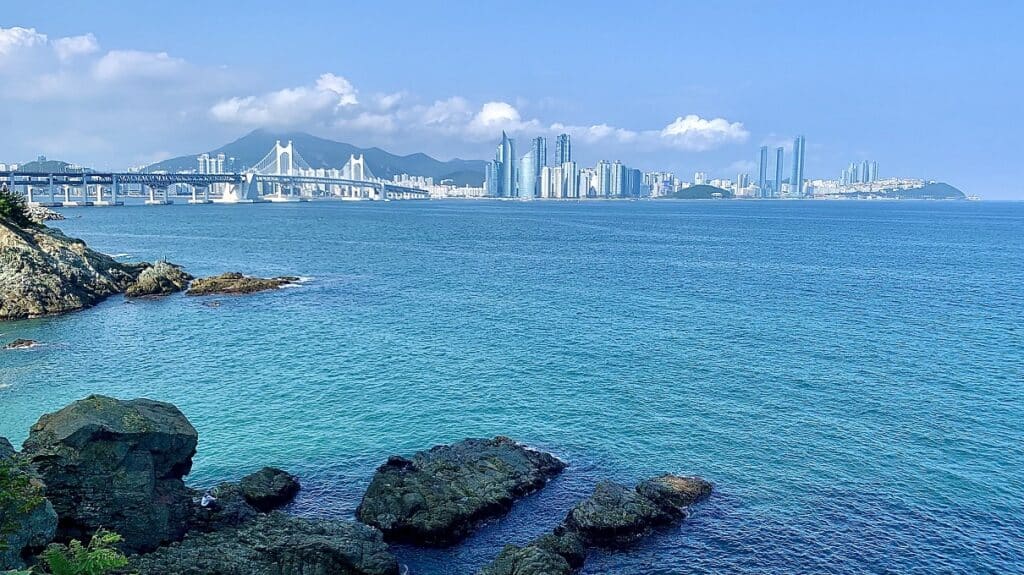
7 Great reasons budget slow travelers should visit Busan, South Korea
Ellen
Back on budget in Busan
TheoAbout Ellen

Ellen and spouse Tedly started a budget slow travel lifestyle in 2015. She was diagnosed with early-stage breast cancer while traveling in Europe in 2018 through an annual mammogram. She had a double mastectomy in Croatia, recovered from surgery, and kept traveling.
As a recovered alcoholic, Ellen seeks out spiritual growth opportunities in a variety of ways during her travel life, including service work, volunteering, and the occasional silent meditation retreat.

vagabond
Vagabond: (n) A person who wanders from place to place without a home or job. (adj) Having no settled home.
slow travel
Long-term stays; use buses and trains with infrequent flights; the faster you go the less you see.

